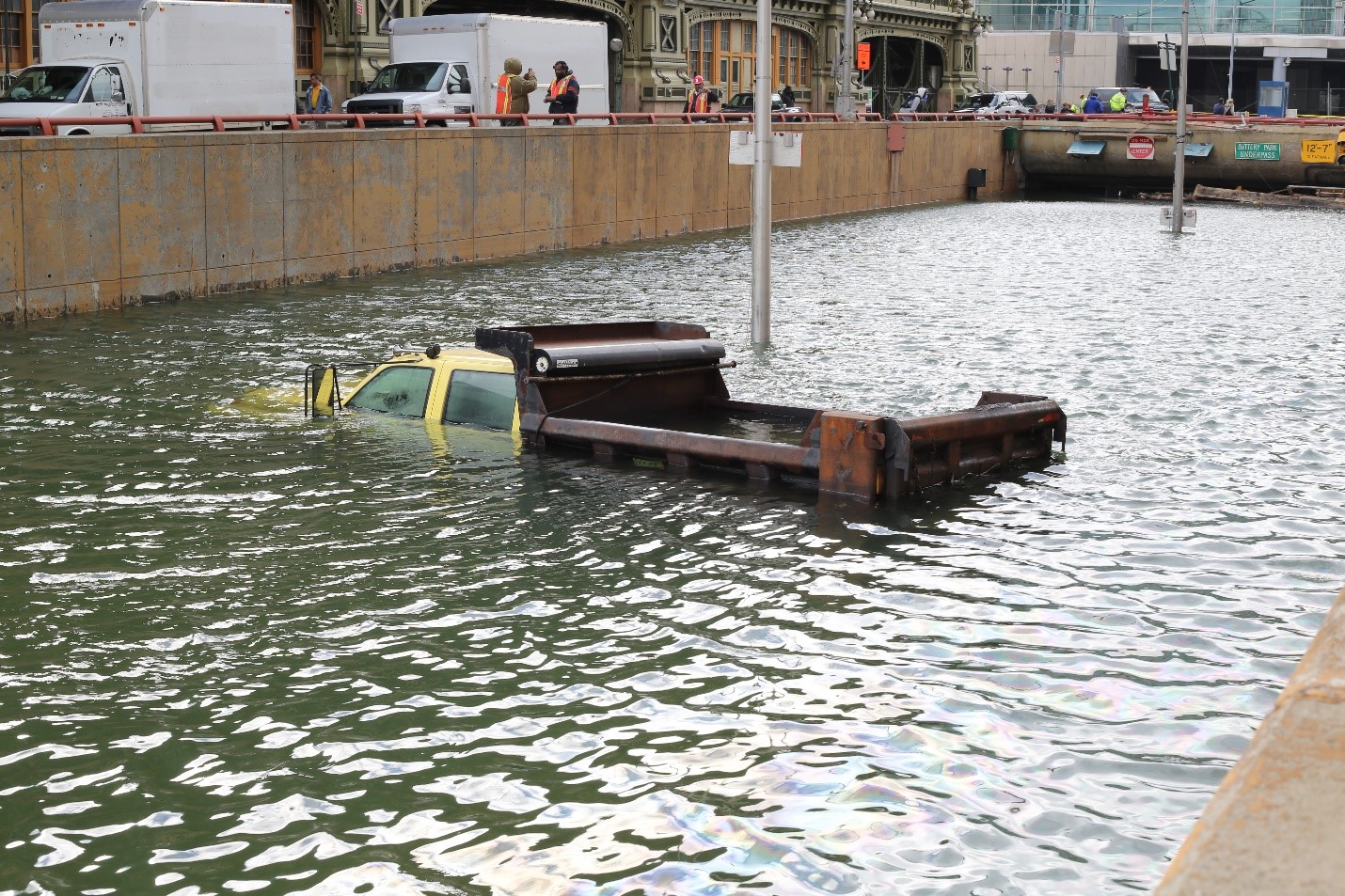July 30, 2021
The Effect of Tide–Surge–River Interactions on Delaware Bay Estuary Coastal Flooding
Numerical modeling shows the effects of nonlinear tide–surge–river interactions on three coastal flooding zones in the Delaware Bay Estuary.

The nonlinear interactions between tides, surges, and rivers play important roles in transitioning flooding, which can shift along estuaries based on the balance between river flow and storm surge forcing.
[Courtesy Timothy Krause | Flickr ]
The Science
Tropical cyclones (TCs) can generate extreme coastal storm surges and river flooding, causing devastating damage to coastal communities. However, little is known about how interactions between storm surges and river floods exacerbate coastal flooding, especially at the top of high tides. Through a detailed modeling analysis of the Delaware Bay Estuary (DBE), researchers separated the total water level (TWL) induced by storm surge, river flow, and tides into components to investigate contributions of the different factors and their interactions to coastal flooding. Based on the simulation results, researchers identified three distinct zones along the DBE, including a transition zone where the interaction of a river flood and storm surge can result in compound flooding.
The Impact
Low-lying coastal areas in the mid-Atlantic region are subject to TC-induced compound flooding due to the co-occurrence of river floods and coastal storm surges. Increasing coastal resilience to compound flooding necessitates understanding the effect of different factors on compound flooding and the spatial distribution of TWLs in the estuary. This research identified three different zones in the DBE where floods are dominated by river flow (upstream), storm surge (downstream), and a combination of the two (transition). Information obtained from this study can be used to support the development of adaptation and mitigation strategies for coastal communities.
Summary
This study investigated the effect of nonlinear interactions on coastal compound flooding induced by the co-occurrence of river floods and coastal storm surges in the DBE using a 3-D, high-resolution storm surge model. Specifically, the coastal flooding, or TWL, induced by historical extreme weather events—Hurricanes Irene (2011), Sandy (2012), and Isabel (2003) and Tropical Storm Lee (2011)—were simulated and analyzed. Simulated water levels were decomposed to astronomical tides, low-frequency surge, and nonlinear interactions. The effects of the nonlinear interactions on the TWL were further analyzed. Model results show that the DBE can be divided into three zones: (1) the river dominated, (2) the storm surge dominated, and (3) the in-between transition zones. Analysis results indicate the effect of tide–surge–river interactions on TWL in the transition zone was more noticeable during compound flooding events. Sensitivity analyses also indicate that the transition zone of compound flooding shifts downstream as river flow increases.
Principal Investigator
Robert Hetland
Pacific Northwest National Laboratory
robert.hetland@pnnl.gov
Program Manager
Jennifer Arrigo
U.S. Department of Energy, Biological and Environmental Research (SC-33)
Environmental System Science
jennifer.arrigo@science.doe.gov
Funding
This work is part of the multiprogram, collaborative Integrated Coastal Modeling (ICoM) project. It was supported by the MultiSector Dynamics (MSD), Earth System Model Development (ESMD), and Regional and Global Modeling and Analysis (RGMA) program areas of the Biological and Environmental Research (BER) Program within the Department of Energy’s (DOE) Office of Science. All model simulations were performed using resources available through Research Computing at Pacific Northwest National Laboratory (PNNL).
References
Xiao, Z., et al. "Characterizing the Nonlinear Interactions between Tide, Storm Surge, and River Flow in the Delaware Bay Estuary, USA." Frontiers in Marine Science 8 715557 (2021). https://doi.org/10.3389/fmars.2021.715557.

